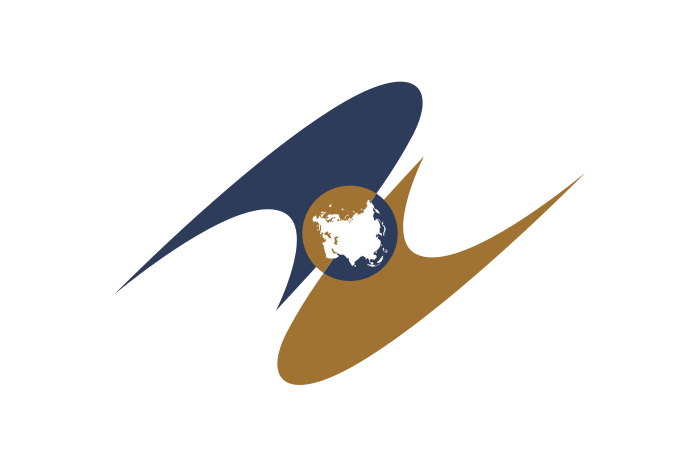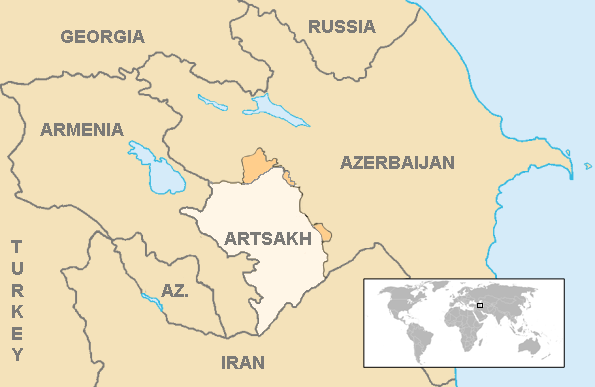The Soviet Union broke up into 15 separate countries in December 1991. What would a reconstituted Soviet Union/Russian Empire look like, if that is indeed one of the goals of Russian leadership (and some people say it is).

1. Russia, 2. Ukraine, 3. Belarus, 4. Uzbekistan, 5. Kazakhstan, 6. Georgia, 7. Azerbaijan, 8. Lithuania, 9. Moldavia, 10. Latvia, 11, Kirghizia, 12. Tajikistan, 13. Armenia, 14. Turmenistan, 15. Estonia.
The three Baltic states appear to be out of their grasp, being members of NATO. They are militarily protected by an alliance of 29 members, and their economic growth has been significant. The per capita income of Estonia is $19,840 (IMF 2017), while that of Russia is $10,608. Half of Russia’s GDP is in Moscow, just to drive home what the rest of the country is like.
Some of these countries are united into the Eurasian Economic Union. It consists of five countries: Russia, Armenia, Belarus, Kazakhstan, Kyrgyzstan. It was Ukrainian President Yanukovych’s decision to develop closer economic ties with Russia and the Eurasian Union and back away from an association agreement with the European Union (28 countries) that started the Euromaiden protests in November 2013 that lead to his removal from power in February 2014 (and the Russian seizure of Crimea and the Russian-influenced revolts in Lugansk and Donetsk). The Eurasian Union flag is below. Interesting map choice.

So who would be in a reconstituted Soviet Union/ Russia Empire?
There are the five “stans” in Central Asia (Kazakstan, Uzbekiskan, Kyrgystan, Tajikistan, and Turkmenistan). By the nature of their geography they are somewhat isolated, landlocked, and potentially could be brought back into Russia’s orbit. Two countries are already members of the Russian created Eurasian Union. There is also Belarus, another Eurasian Union member. Belarus does not have a strong history of independence and could be brought back into Russia’s orbit. Belarus might very well rejoin Russia after its dictator Lukaschenko (age 64) moves on to wherever he ends up. These could reconstitute a new force if they could be brought into Russia’s orbit. Some stats:
(2018 est.) (IMF 2017)
Population GDP (millions)
Russia 146,877,088 $1,527,469
Uzbekistan 32,653,900 47,883
Kazakhstan 18,292,700 160,839
Belarus 9,478,200 54,436
Tajikistan 8,931,000 7,234
Kyrgystan 6,309,300 7,061
Turkmenistan 5,851,466 37,926
Sub-Total 228,393,654 1,842,848
This adds up. It is more significant demographically than economically. The per capita income of Uzbekistan is $1,491 per year and Kyrgyzstan and Tajikistan are worse. This recombined country would move from being the 12th richest in the world up to being the 10th richest, ahead of Canada but behind Italy.
Now there are three countries in the Caususus: Georgia, Azerbaijain, and Armenia and four odd political entities (Abkhazia, North Ossetia, Artsakh and Chechnya). Of the three former Soviet countries, Georgia is openly hostile to Russia (and Abkhazia and North Ossetia have been carved from it) and Azerbaijain and Armenia are hostile to each other. They fought a war over the province of Nagorno-Karabakh from 1988-1994, which Armenia won. It is now the Republic of Artsakh.

Only Armenia is a member of the Eurasian Union. It will be difficult for Russia to bring these three nations into its fold for a number of reasons, but again they remain relatively isolated with only Iran and Turkey as the neighbors in the region. So…lets us assume this somehow happens:
Population GDP (millions)
Old Sub-total 228,393,654 1,842,848
Azerbaijain 9,943,226 40,670
Georgia 3,729,600 15,230
Armenia 2,969,800 11,037
Abkhazia 240,705 N/A
Artsakh 145,053 N/A
New sub-total 245,422,038 1,909,785
They are all pretty poor, with Azerbaijan having a per capita income of $4,141 and Georgia and Armenia having similar slightly lower numbers.This really does not get a new Russia Empire back to being a world power. Italy still has a larger GDP.
This now assembles 10 of the original 15 republics together. The three Baltic states are out of reach without a world war, and that leaves only Ukraine and Moldova.
Population GDP
Ukraine 42,248,129 109,321
Moldova 3,550,900 7,945
Transnistria 470,600 N/A
Note that the Ukrainian population figures excludes Crimea and Sevastopol but includes Lugansk and Donetsk. The per capita income of Ukraine is $2,583 and Moldova is $2,280.
It is clear that if one was going to re-constitute the Soviet Union/Russian Empire that Ukraine is the real prize here. Some argue that this is what the conflict in 2013-2014 was about, and is the source of the continued conflict over Crimea, Lugansk and Donetsk.
P.S. The stats for the three Baltic states are:

Chris, please, discuss the headache that Russia might suffer from trying to incorporate and then retain regions under the influence of Islam.
The world of Islam is not homogenous and monolithic. Former areas under Soviet rule were not particularly known to breed radical islamists. Nowdays, many originating from these territories are recruited as mercenaries and sent to the fronts in Syria, Afghanistan and Iraq to destabilize the region. Any (future) potential threat might be a consequence of Russian intervention in Syria, or their actions in Chechenya (Dubrowka Theatre comes into my mind), but they have been mostly subdued.
Neal, you are welcome to do a guest post on the subject, but Russia/Soviet Union/Russian Empire has always been a multi-national multi-religious state. Russia itself has 160 ethnic groups that speak 100 different languages. Muslims make up at least 6.6% of the population. This is something like 9 or 10 million followers. It was probably higher in the Soviet Union, except all religion was discouraged.
So, a reconstituted Russian Empire/Union might have to decide on whether to have a policy of discouraging/subduing (head bashing, and thus transferring the headache to radicalized Islamists) or to have a policy of accommodating/supporting (thus being a cause of destabilization headaches for other regions).
They have already been dealing with this problem with Chechnya for over a decade. This appears to be the center of radicalized Muslims in the former Soviet Union. A significant number of Chechens were with ISIS in Iraq and Syria.
The development of radicalized Muslims in Chechnya occurred over time. They were really not there at the start of the wars in 1994 and did not show up in force until later.
On the other hand, there has not been much conflict in Kazan, the capital of the Federal Republic of Tatarstan, which is 40-50% Tatar (originally Sunni Muslims). The same goes with most of the other Muslim areas of Russia.
Part of what a reconstituted Russian Empire/Union would look like would have to do with its outward facing as well as with its inward appearance.
The regaining of Uzbekistan, Kazakhstan, Georgia, Azerbaijan, Tajikistan, Armenia, and Turkmenistan probably would lead to the presenting of a different face to the world than would not having those regions: even more eyeing of opportunities for involvement in the Middle East.
Regaining of Kazakhstan, Kirghizia and Tajikistan probably wouldn’t prompt a different face being projected toward China (unless cross-border ethnic issues developed along the northwestern border of China); so, just regaining those regions probably wouldn’t affect its outward appearance to the world.
Regaining of Ukraine, Belarus, Lithuania and Moldavia (by peaceful means) probably wouldn’t alter its face to the world, but it would make that ugly face even more “in the face” of NATO.
Regaining of Latvia and Estonia (again, by peaceful means) probably wouldn’t make much difference to the appearance of its facing to the world.
Attempting the regaining of regions by non-peaceful means might provoke a response that would bloody the nose of Russia (unless the policemen of the world were too frightened of the prospect of nuclear war to stand up to the bully).
If the goal is to have significantly greater population and income then would there be enough incentive for Russia to face the possibility of getting its nose bloodied? On the other hand, if it was a matter of the pride of once again having its empire …
Well, there has already been a lot of violence in the former Soviet Union….which may become the basis for a future blog post.
Hi it’s me, I am also visiting this web site on a regular basis, this web page is truly nice and the users are actually sharing good thoughts.
Nicest bot ever.
😉